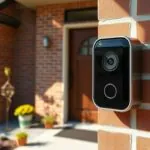Table of Contents
ToggleIn today’s world, where the couch is the new office and the kitchen table doubles as a conference room, networking at home has never been more essential. Whether it’s for work, socializing, or just keeping the Wi-Fi strong enough to stream cat videos, mastering home networking can make or break your digital experience.
Imagine a life where buffering is a thing of the past and your devices communicate like old friends. With a few clever tips and tricks, anyone can transform their home into a networking powerhouse. So grab a snack, kick back, and get ready to turn your humble abode into a tech-savvy haven that even your neighbor’s Wi-Fi will envy. After all, who wouldn’t want to impress their friends with a network that’s faster than their gossip?
Understanding Networking In Home
Understanding home networking is essential in enhancing connectivity among devices. It connects various gadgets like computers, smartphones, and smart home devices, enabling seamless communication and internet access.
What Is Home Networking?
Home networking refers to linking devices within a residence to share resources and access the internet. Typically, a router serves as the central hub, connecting wired and wireless devices. Multiple network equipment, such as switches and access points, can enhance connectivity across larger spaces. Devices, including printers and storage systems, can be shared via this network, making it efficient for families to access information from different locations.
Importance Of Home Networking
Home networking plays a critical role in today’s digital landscape. It improves the online experience by reducing connectivity issues like lag and buffering. Efficient networking supports remote work, online learning, and entertainment options, enabling multiple users to function effectively without disruptions. Reliable home networks also enhance security by safeguarding personal data against unauthorized access. In summary, having a well-established network creates a tech-friendly environment that meets the growing demands of modern living.
Types Of Home Networks
Home networks primarily fall into two categories: wired and wireless. Each type offers distinct advantages based on user needs and preferences.
Wired Networks
Wired networks connect devices using physical cables. Ethernet cables typically link computers, printers, and routers. These connections provide stable and high-speed internet access. Users often experience lower latency with wired setups, making them ideal for gaming and video streaming. Security also improves significantly with wired networks, as physical access is required to connect devices. Homes with multiple devices benefit from the reliability and performance of wired configurations.
Wireless Networks
Wireless networks eliminate the need for cables, using Wi-Fi technology for connectivity. Routers broadcast signals, allowing devices like smartphones, tablets, and smart TVs to connect freely. Flexibility stands out as the primary advantage, offering mobility throughout the home. Users can easily add new devices without worrying about additional wiring. While wireless networks are convenient, they may face interference and signal range challenges. House layouts and obstructions impact performance, so careful placement of routers enhances coverage.
Setting Up A Home Network
Establishing a home network requires specific equipment and a systematic approach. Focus on these essentials for a successful setup.
Necessary Equipment
Key equipment includes a router, modem, and Ethernet cables. Routers act as the hub for network communication, facilitating internet access for all connected devices. Modems connect to the internet through service providers, translating data into a usable format. Ethernet cables provide reliable connections for devices, especially where stable connections are crucial, like gaming consoles and PCs. Additionally, Wi-Fi adapters enhance connectivity for devices that rely on wireless signals. Having all these components ensures a robust network experience.
Step-By-Step Setup Guide
Start by placing the modem in a central location to optimize coverage. Connect the modem to the router using an Ethernet cable. After that, power on both devices, allowing them to establish a connection. Access the router settings through a web browser using the default IP address, often printed on the device. Customize the network name and password for better security. Next, connect devices, either wirelessly or with additional Ethernet cables. Test the connection speed on various devices to ensure everything works smoothly. Finally, adjust settings as needed to enhance performance and security.
Securing Your Home Network
Securing a home network is crucial to safeguard personal information and maintain privacy. Understanding potential vulnerabilities helps protect against unauthorized access.
Common Security Risks
Cyber threats pose significant risks to home networks. Malware can infiltrate devices, compromising sensitive data. Unsecured Wi-Fi networks allow outsiders to access personal information freely. Phishing attacks target users through deceptive emails, tricking them into revealing passwords and financial details. Outdated firmware on network devices increases vulnerability to security breaches. Lack of strong passwords enables easy access for hackers. Recognizing these security risks arms users with the knowledge to defend their networks effectively.
Best Practices For Network Security
Implementing best practices strengthens home network security. Start by using a strong, unique password for the Wi-Fi network. Enable WPA3 encryption for maximum security, as it offers better protection against unauthorized access. Regularly update router firmware to patch security vulnerabilities and enhance functionality. Employ a guest network for visitors, isolating them from personal devices. Utilize firewall settings to filter unwanted traffic and block malicious attempts. Regularly monitor connected devices to identify any unauthorized access quickly. These practices create a robust defense against potential cyber threats.
Troubleshooting Common Issues
Home networking issues can disrupt daily activities. Understanding how to address common problems enhances overall connectivity and performance.
Connectivity Problems
Disconnects often stem from Wi-Fi signal issues. Weak signals arise from distance from the router or obstructions like walls. Identifying the router’s location can improve signal strength. Repositioning the router to a central space minimizes interference. Switching to a less congested channel helps as well; using a Wi-Fi analyzer can guide this choice. If devices struggle to connect, checking for firmware updates or restarting the router may resolve the issue.
Performance Issues
Lagging applications frequently result from inadequate bandwidth. Devices sharing a single bandwidth can slow performance, especially during activities like video streaming or online gaming. Disconnecting unused devices may enhance speed. Bandwidth management tools available in many routers prioritize traffic for critical tasks. It’s wise to test internet speeds through various devices to assess performance. Regularly monitoring performance can indicate when upgrades to internet plans become necessary.
Mastering home networking is vital for creating a seamless digital experience. By understanding the types of networks and following best practices for setup and security, individuals can transform their homes into efficient networking hubs. This not only enhances productivity for remote work and online learning but also ensures a secure environment for personal data.
Addressing common issues and implementing effective troubleshooting strategies can significantly improve connectivity and performance. With the right knowledge and tools, anyone can build a robust home network that meets the demands of modern living. Embracing these practices will lead to a tech-savvy space that stands out and impresses guests.





